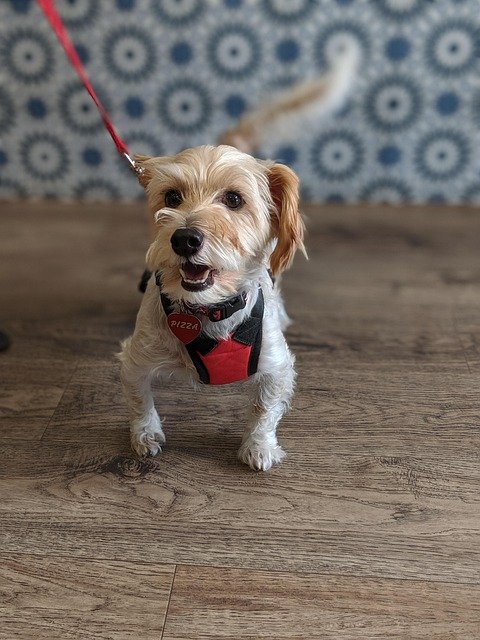Finding Dogs in Need of Adoption Near Me: A Practical, Local Guide
Ready to welcome a dog who needs a home? This guide explains how to find adoptable dogs in your area using local shelters, rescue groups, and reputable online listings, plus how to evaluate a good match, prepare your home, and understand the steps from application to aftercare support.

Finding a dog who needs a home in your area is easier when you combine local knowledge with smart online tools and a thoughtful plan. Whether you’re considering a puppy, an adult dog, or a bonded pair, the process involves more than just browsing photos. It’s about verifying reputable sources, assessing a dog’s needs alongside your lifestyle, and preparing your household for the transition so everyone—human and canine—can succeed.
Where to look: local shelters, rescues, and online listings
Start close to home with municipal shelters, humane societies, and nonprofit rescue groups. Visiting in person helps you meet staff, ask about temperament, and see how dogs behave in a busy environment. Many organizations also rely on foster networks, which can provide insights into a dog’s routine in a home setting. For broader reach, reputable platforms aggregate listings from shelters and rescues. Use these to scan availability, but always confirm the source organization and read the full profile. A balanced approach—local visits plus vetted online search—reduces the risk of misinformation and helps you discover dogs that fit your situation.
Search smart: location tools, filters, and community networks
Use location filters to focus on dogs within practical travel distance, factoring in transport policies for out-of-area rescues. Narrow results by size, age, activity level, and known preferences like dog- or cat-friendliness. Many sites offer alerts for new matches in your area. Beyond platforms, check local services such as community social media groups, neighborhood forums, and veterinarian notice boards where rescues often post urgent cases. Confirm that any private rehoming posts come with veterinary records and verifiable ownership, and prioritize organizations that conduct routine health checks and behavioral assessments to ensure ethical standards.
Assessing fit: temperament, health, and lifestyle needs
A sustainable match looks beyond appearance. Consider energy level (daily exercise needs), sociability (comfort with kids, dogs, or cats), confidence level (sensitivity to noise or new people), and trainability. Ask about health history: vaccination status, spay/neuter, microchip, and any ongoing conditions such as allergies, orthopedic issues, or anxiety that may require management. Discuss enrichment needs and typical triggers, like resource guarding or separation stress, and what training has helped. Align the dog’s profile with your routine—work hours, housing type, outdoor access, and travel habits—to prevent mismatches. If you’re unsure, request a trial period or multiple meet-and-greets to make a more informed decision.
Preparing your home: supplies, safety, and family readiness
Set up essentials before arrival: a properly fitted collar and ID tag, harness, leash, food and water bowls, crate or bed, waste bags, and safe chew toys. Puppy-proof or dog-proof by securing trash, cords, medications, and plants; consider baby gates to manage space and decompression. Establish household rules in advance—where the dog sleeps, off-limits rooms, feeding times, and walking duties—so everyone is consistent. If you have other pets, plan controlled introductions in neutral spaces and monitor body language closely. Select a veterinarian and book a wellness exam to review records, discuss nutrition, and schedule vaccines or preventives. A prepared environment reduces stress and supports smoother adjustment.
The adoption process and aftercare: applications, visits, and support
Most organizations use an application to understand your experience, lifestyle, and preferences. Expect reference checks, a landlord approval if renting, and sometimes a home visit (virtual or in person). Meet-and-greet sessions help assess compatibility; ask about behavior notes, training cues, and daily routines. After adoption, the first 3–3–3 rule (three days to decompress, three weeks to adapt to routines, three months to settle in) can be a helpful guide. Many shelters and rescues offer post-adoption advice, training referrals, or behavior helplines. Keep records organized, maintain a predictable schedule, and use positive reinforcement training to build trust and confidence.
Below are examples of reputable organizations and directories to support your search. Check geographic availability and policies for each, and verify details with the provider before visiting.
| Provider Name | Services Offered | Key Features/Benefits |
|---|---|---|
| Petfinder | Online adoption listings from shelters/rescues | Extensive filters; email alerts; US/Canada coverage |
| Adopt-a-Pet | Online listings and rescue directory | Search by distance, age, and size; foster listings; US/Canada |
| ASPCA Adoption Center | Shelter and adoption services | Behavior resources; post-adoption support; NYC-based |
| RSPCA | Regional shelters and welfare services | Inspectorate, education, and advice; England and Wales |
| Dogs Trust | Dog rehoming charity and centers | Meet-and-match approach; behavior support; UK-wide |
| PetRescue | National adoption listings | Australia-wide rescue listings; guidance for adopters |
| SPCA Singapore | Shelter and community programs | Local adoptions; education and welfare support; Singapore |
Conclusion
Successful dog adoption blends careful research, realistic self-assessment, and a prepared home. Start with reputable local organizations, refine your search with thoughtful filters, and verify information before committing. Prioritize temperament and health considerations that align with your routine, and lean on aftercare resources to support a gradual, positive transition. With patience and a plan, you create the conditions for a stable, humane placement that benefits both the dog and your household.




